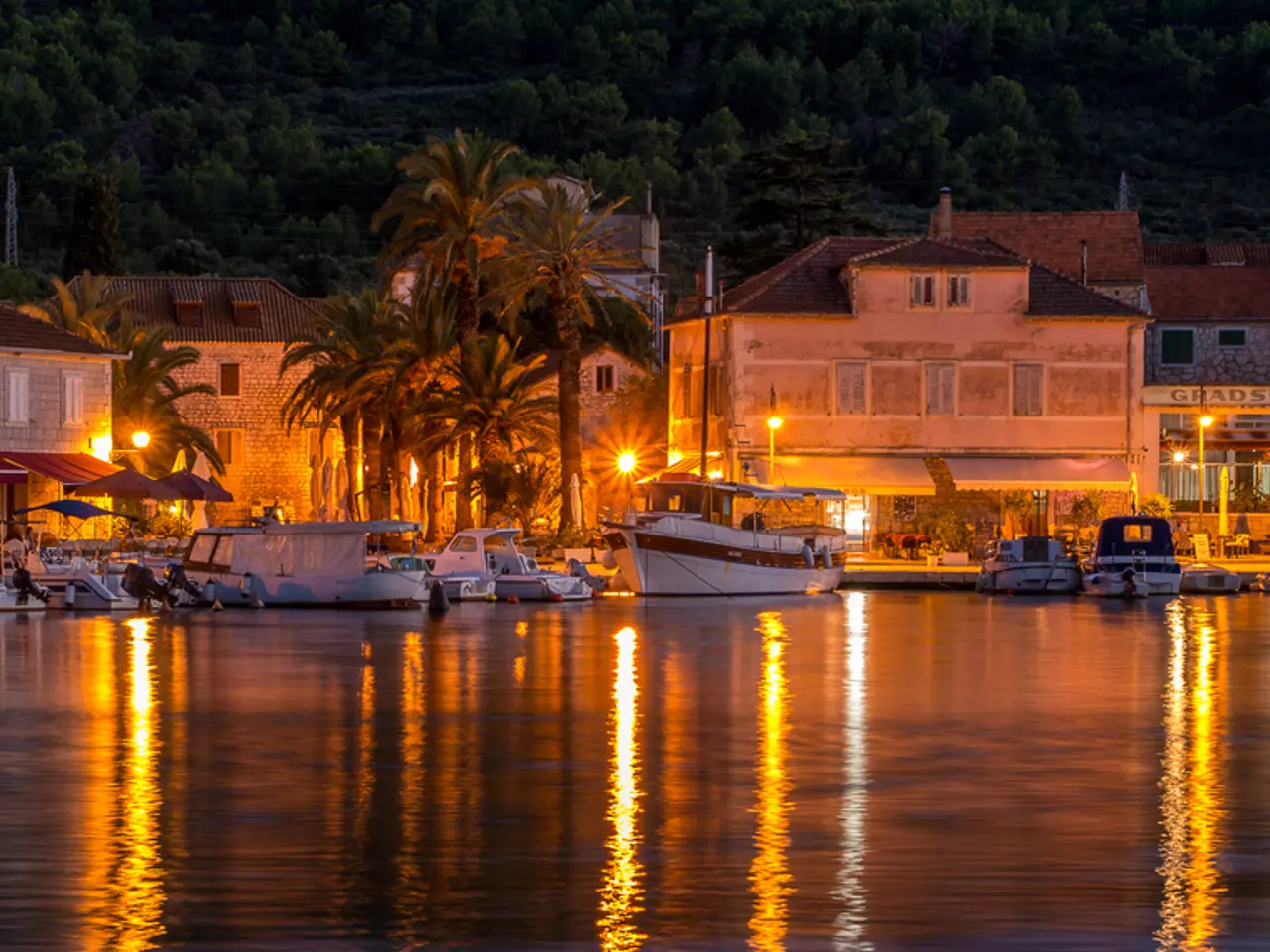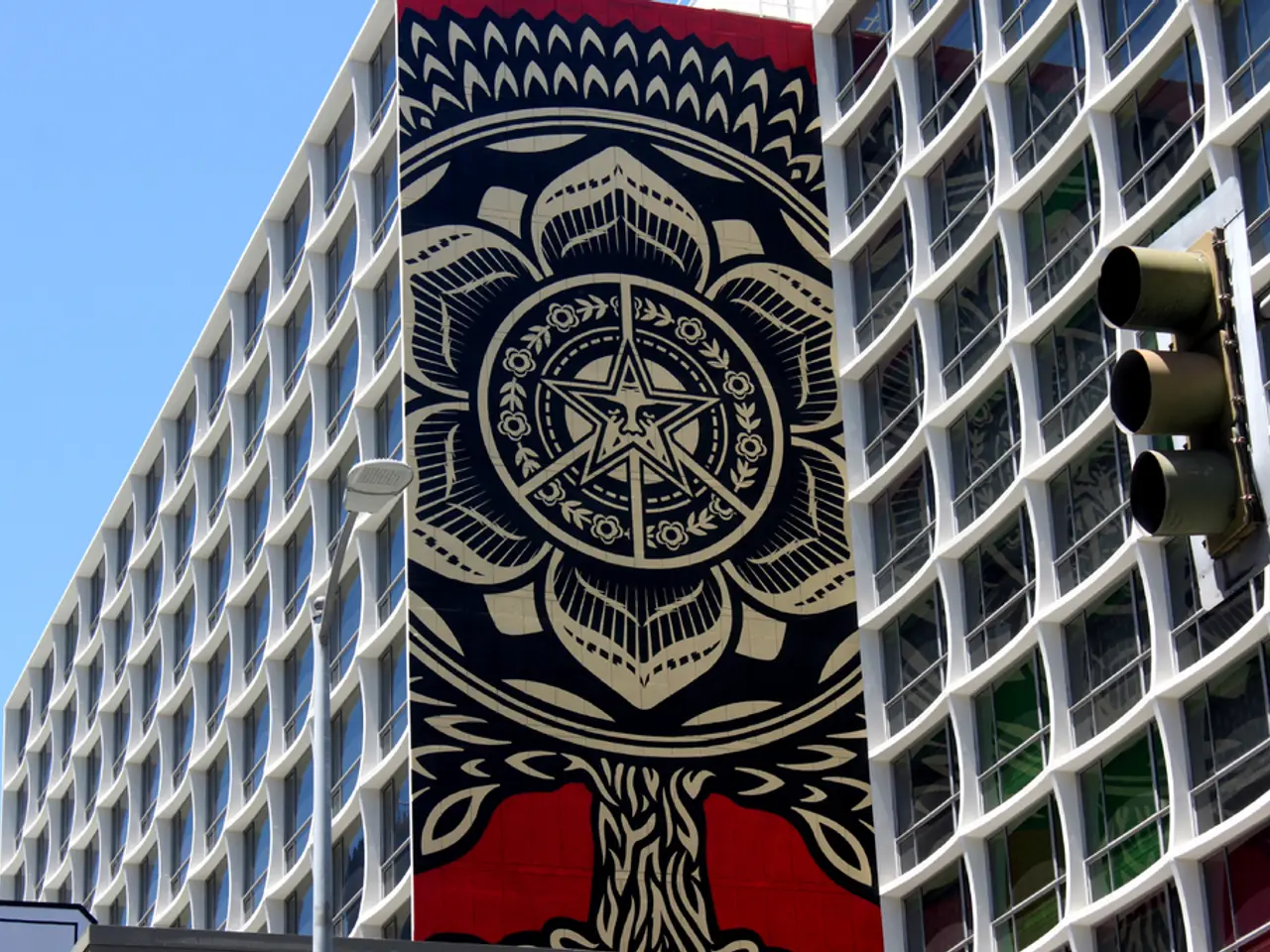The potential impact of electric hydrofoil ferries on future transportation methods.
The world of marine transportation is witnessing a significant shift with the resurgence of hydrofoil technology, propelled by advancements in digitalization, composite materials, and sensor technology. This modernized hydrofoil ferry technology is not only offering faster commute times but also playing a crucial role in cutting emissions, as demonstrated by several projects across the globe.
One of the key advantages of hydrofoil technology is its ability to lift the ferry hull out of the water, dramatically reducing drag and allowing speeds up to 30 knots - approximately double that of conventional ferries. This speed boost, combined with the energy efficiency it provides, translates to significantly faster commutes while using half the energy, thus reducing emissions [2][4].
For instance, the Artemis EF-12 Escape hydrofoil ferry, an electric vessel equipped with hydrofoils, operates more efficiently, offering a smoother, quieter ride with much lower operating costs compared to diesel vessels [2][4]. Similarly, the UK’s Chartwell Marine developed a lightweight trimaran electric ferry (TriFoiler) that demonstrated five-fold cost savings over traditional diesel ferries during sea trials, thanks to its electric propulsion and foil design, which enhances stability and efficiency [1].
Projects like the Electric Orkney Project in Scotland are trialing electric hydrofoil vessels to decarbonize inter-island routes, aiming to reduce emissions, noise pollution, and operating costs while improving passenger experience [3]. These ambitious initiatives are paving the way for the transformation of local ferry commutes, providing sustainable, faster, and cost-effective marine transport options.
The most ambitious implementations of electric hydrofoil ferries are in British Columbia, the UK (including Orkney), and Mumbai, where trials and planned deployments are underway. In British Columbia, the Artemis EF-12 hydrofoil ferry has been demonstrated in Victoria’s Inner Harbour and is being evaluated for passenger-only ferry service expansion [2][4]. The technology could open new, faster water-based transportation corridors, such as a potential route from downtown Victoria to Royal Bay, dramatically reducing travel times and providing a sustainable alternative to road commuting.
In the UK and Scotland, the Chartwell Marine TriFoiler project, supported by a UK government grant, and the Electric Orkney Project are spearheading trials and potential adoption of electric hydrofoil ferries to replace traditional ferries on inland and coastal routes, emphasizing decarbonization and cost savings [1][3].
In India, particularly Mumbai, plans are underway to introduce electric hydrofoil ferries to ease congestion and pollution along the city's waterways, marking an ambitious move to implement this technology in a dense urban environment with severe traffic challenges [5].
The fuel cost savings over the lifetime of the EF-24 could be $27 million, compared with a diesel boat, according to David Tyler, a co-founder of Artemis. To cater to the U.S. market, builders must comply with the Jones Act, which requires ships that transport goods, including passengers, to be built in the United States. Operators in Norway are considering using the P-12 for a semiautonomous service on a 14-mile trip from the island of Frosta to Trondheim, if the P-12 can handle rougher seas.
Ferry transportation is making a comeback in urban areas, driven by congestion and the revitalization of waterfronts. The market for electric hydrofoil ferries is estimated to be almost $8 billion a year, with Asia being the largest potential market, followed by Europe and North America. The P-12, an electric hydrofoil ferry developed by Swedish startup Candela, has almost halved the commute time of a conventional diesel ferry. The P-12 ferry service in Mumbai aims to reduce travel time from the Gateway of India to Alibag and Elephanta Island, as well as from the airport to the center of Mumbai, cutting travel time from 90 minutes by car to less than 30 minutes on the water.
- The resurgence of hydrofoil technology in the marine transportation industry is being fueled by advancements in both digitalization and environmental science, resulting in more efficient, cost-effective, and environmentally friendly solutions.
- In addition to projects in British Columbia, the UK, Scotland, and Mumbai, the market for electric hydrofoil ferries is particularly promising in Asia, with estimates suggesting it could be worth almost $8 billion annually.
- The P-12, an electric hydrofoil ferry developed by Swedish startup Candela, has demonstrated significant speed boosts and energy efficiency, potentially cutting travel times in half compared to conventional diesel ferries, as seen in prospective Mumbai ferry services.
- Similar advancements in science, technology, and finance are transforming various sectors, with sports, business, and transportation companies increasingly adopting these environmentally friendly technologies to improve performance, reduce costs, and mitigate environmental impact.




